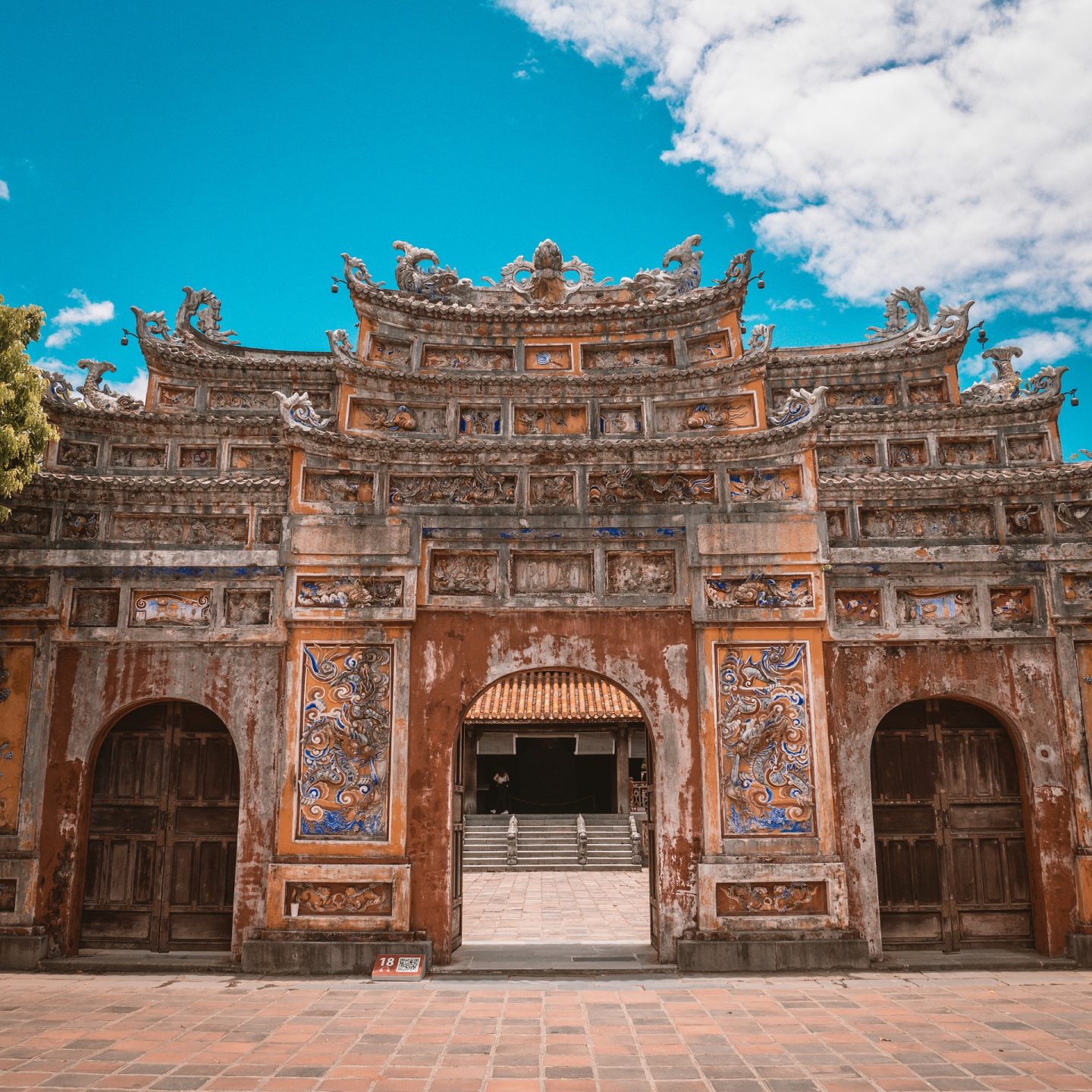Hué is our favourite city in Vietnam. It’s pronounced ‘hway’, packed with imperial heritage and has some of the best food in the country. Endlessly fascinating Hué was the imperial capital of the Nguyen emperors from 1789 to 1945.
Here’s our top 5 must sees:
The Imperial City:
This must visit, walled citadel contains ornate palaces, tiled gates, exotic gardens and lotus filled ponds. The stunning red and gold colonnaded Thai Hoa Palace is the centrepiece. Other highlights of the moated complex include: Ngo Mon Gate, Thai Binh Reading Pavillion, The Forbidden Purple City with the Left and Right Houses and the Hung Mieu temple.
Tip:
Much of the large site is in full sun, so water and sunscreen are essential.
Tu Duc Mausoleum:
There are 7 Royal Mausoleums along the valley of the Perfume River. All are worth visiting, but if you’ve only time for one, visit the Tu Duc Mausoleum. The palace and tomb are both impressively large with a forecourt lined with statues of elephants, mandarins and horses. The mausoleum site is set in a 30 acre park, with pine forests, a boating lake and ornate pavilions allowing visitors to spread out and making it easier to avoid the crowds.
Tip:
Don’t miss exploring the grounds to experience the calm of the complex.
Tu Hieu Pagoda:
Tu Hieu is not the most famous pagoda in Hué, but the lack of tourists make it the most atmospheric and peaceful. We were totally alone on our visit. Set in a remote, pine forest on a hill, Tu Hieu dates from 1843. It is an active Buddhist temple with seventy resident monks who are very welcoming. Highlights include the gateway arch with a crescent pool, the moss covered tombs of imperial eunuchs and the twin temples at the top of the hill.
Tip:
Tu Hieu is on the way to Tu Duc, so it’s worth combining the two. Don’t miss the daily chants of the monks at 4.30 a.m, 10 a.m, noon, 4 p.m and 7 p.m.
Thien Mu Pagoda:
Thien Mu is probably Hué’s most instagrammed monument. Set on the north bank of the Perfume River, the pagoda is an impressive 7 storeys high and was built by Emperor Thieu Tri in 1844. Each level is dedicated to a Buddha in human form. Check out the pavilions – one houses a massive bell forged in 1710, and the other contains a stele (from 1715) placed on the back of a large marble turtle.
Tip:
The crowds are a real drawback at Thien Mu, so go early or late to avoid the tours.
Khai Dinh Mausoleum:
Khai Dinh is usually very busy, but its elaborate, ornamental style makes it most visitors’ favourite tomb in Hué. You reach the temple by climbing 130 steps. It would be difficult to include more decoration on both the exterior and interior. The outside features Baroque motifs alongside Cham architecture and feels very European and French. Inside the palace, the glass and porcelain mosaics continue the elaborate design.
Tip:
Again avoid the tours by going early or late.
Pagoda visiting tips:
Remember to dress appropriately and cover legs, and shoulders.
Be respectful and speak quietly in the complexes as they are Buddhist shrines.
